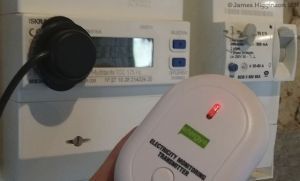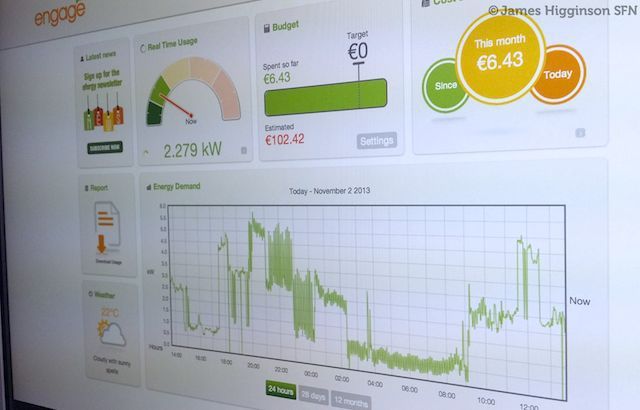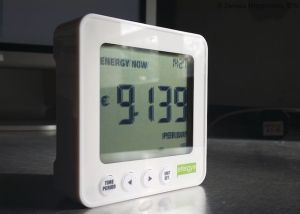Shop for Efergy Engage Hub here
Our electricity consumption is out of control. We are currently consuming in the region of 1500 kW/h per month which equates to around €130. Simply encouraging my family to be more frugal and turn lights off behind themselves isn't cutting it. This is because the energy the lights consume is not the major factor; I run my business from home and as a result, I have a lot of computer equipment running from early in the morning until well into the evening. There's a printer, phone chargers a couple of desktop machines, tablets and a whole shelf full of routers, cordless telephones etc. I have no idea how much power this stuff is using and half of it is left switched on over night.

Clearly something needs to be done. As EDF are providing me with this product it is in their interest to sell me as much of it as possible, so I won't be waiting for them to advise me. Instead I'll be monitoring our energy consumption in real time with the use of some very neat little gadgets from http://www.efergy.com
First up is the Efergy e2 Optical. Efergy monitors use one of two methods to capture the data that the monitoring devices require to operate. This is dependent on the type of meter you have. You'll want either the e2 'classic' which clips around your incoming supply cable or the 'optical' if you have a modern digital meter. These have an LED on the front which pulses every time a fixed unit of energy is consumed, the e2's optical sensor translates this frequency in to some very useful figures for you, especially when coupled with your actual energy cost. For example, a quick glance at the e2 will tell you what your current consumption is in kW/h. It can also sound an alarm when that figure reaches a specified point. Or if you would prefer to see that in monetary or carbon emission terms, you can do that too.

Currently the oven is on in our house and as you can see from the photo the monitor is telling me that if our consumption continues at this rate for the entire day it going to cost us €9.13! Whilst the e2 is not actively or directly altering our consumption in any way, the visual indication is having an indirect effect on our habits. The news that our currency consumption is equivalent to almost 300 euros a month is all the encouragement I need to break out the storm lanterns and head torches!
If, like me, you want to delve a little deeper into the data you could opt for an Efergy Engage Hub. This device also picks up on the data supplied by the e2 optical but instead of putting it up in your e2's display, it makes it available to you via your smartphone, tablet or web browser. You can further customise the output by entering your cost per kW/h and if you are using 'Heures Creuses' or a tariff whereby the cost of energy differs depending on the time of day, you can set that up too.

Having had the e2 and Engage hub setup and recording our consumption for the last two weeks, it's easy to see where we need to make changes. It comes as no surprise that heavy duty prolonged electrical consumption from appliances such as your washing machine and electrical water heater are key culprits, but having a clear visual indication certainly sharpens your focus when it comes to making energy saving decisions.